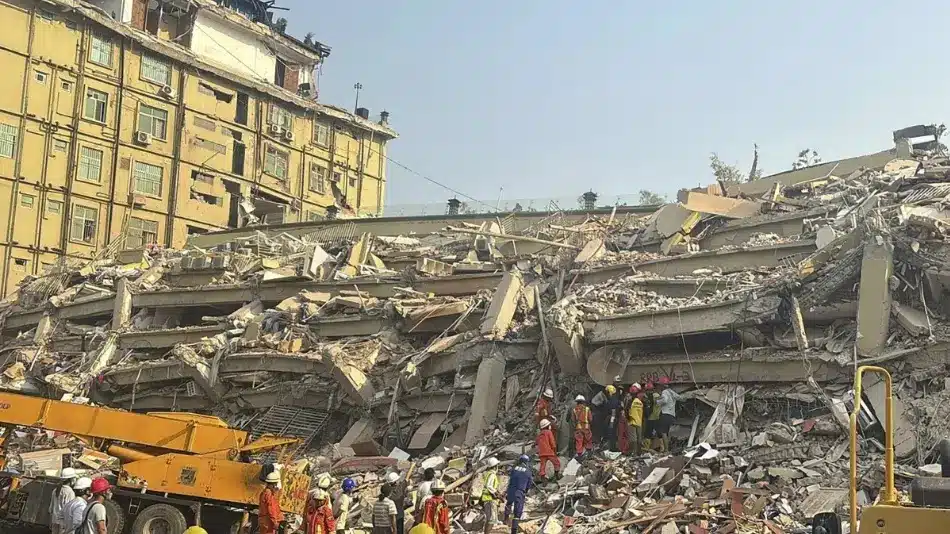The death toll from a devastating earthquake that struck Myanmar on February 28 has surpassed 2,000, state media reported on Monday. Rescue workers and an activist group said the quake crushed hundreds of Muslims praying during the holy month of Ramadan, while a monastery collapsed and crushed 270 Buddhist monks, leaving a large mark on the natural disaster.
Aid agencies and the United Nations have warned that the disaster could worsen the country’s hunger crisis and trigger disease outbreaks in a country already plagued by a four-year civil war that is still ongoing and one of the most difficult places in the world for humanitarian efforts.
Why It Matters
A powerful 7.7-magnitude earthquake struck near Myanmar’s second-largest city, Mandalay, on Friday, March 24, at around 12:50 PM local time. It severely damaged the city’s airport, collapsed roads, and flattened hundreds of buildings across the vast central part of the country, causing widespread disruption to communications.
What to Know
Relief efforts have been slowed by widespread power outages, fuel shortages, and poor communications since the disaster, and a lack of heavy equipment has made rescue operations more difficult, with many people digging through the rubble by hand in temperatures of more than 40°C.

At the earthquake-ravaged U Hla Thein Monastery in Mandalay, rescue teams said they still feared about 150 monks dead. About 700 Muslim worshippers were reported killed in the disaster during Friday prayers, and many more are still missing.
According to humanitarian organizations including the International Rescue Committee and the World Health Organization, hospitals have been damaged or destroyed, trauma victims have limited access to care, and urgent medical needs include surgery, anesthesia, and mental health support.
The country’s civil war is making rescue efforts even more difficult. Aid groups are calling for safe and unhindered access to areas already made inaccessible by the conflict. But before the earthquake, more than three million people in Myanmar had been displaced by the conflict.
Despite these obstacles, aid is pouring in from Russia, China, India, and Southeast Asia, and rescue teams from these countries are on the ground. Countries such as the United States, the United Kingdom, and Australia have pledged financial aid to Myanmar, which has been hit by the natural disaster. Meanwhile, satellite images show widespread destruction in Mandalay, with thousands of buildings severely damaged.
The U.N. resident and humanitarian coordinator, Marcoluigi Corsi, said that even before the earthquake, about 20 million people in Myanmar were in need of humanitarian assistance.
The death toll in earthquake-hit Myanmar is rising steadily, and it is estimated that the number could rise further.
Information: AP
Also Read: New measures to curb China’s population decline, encourage childbearing


